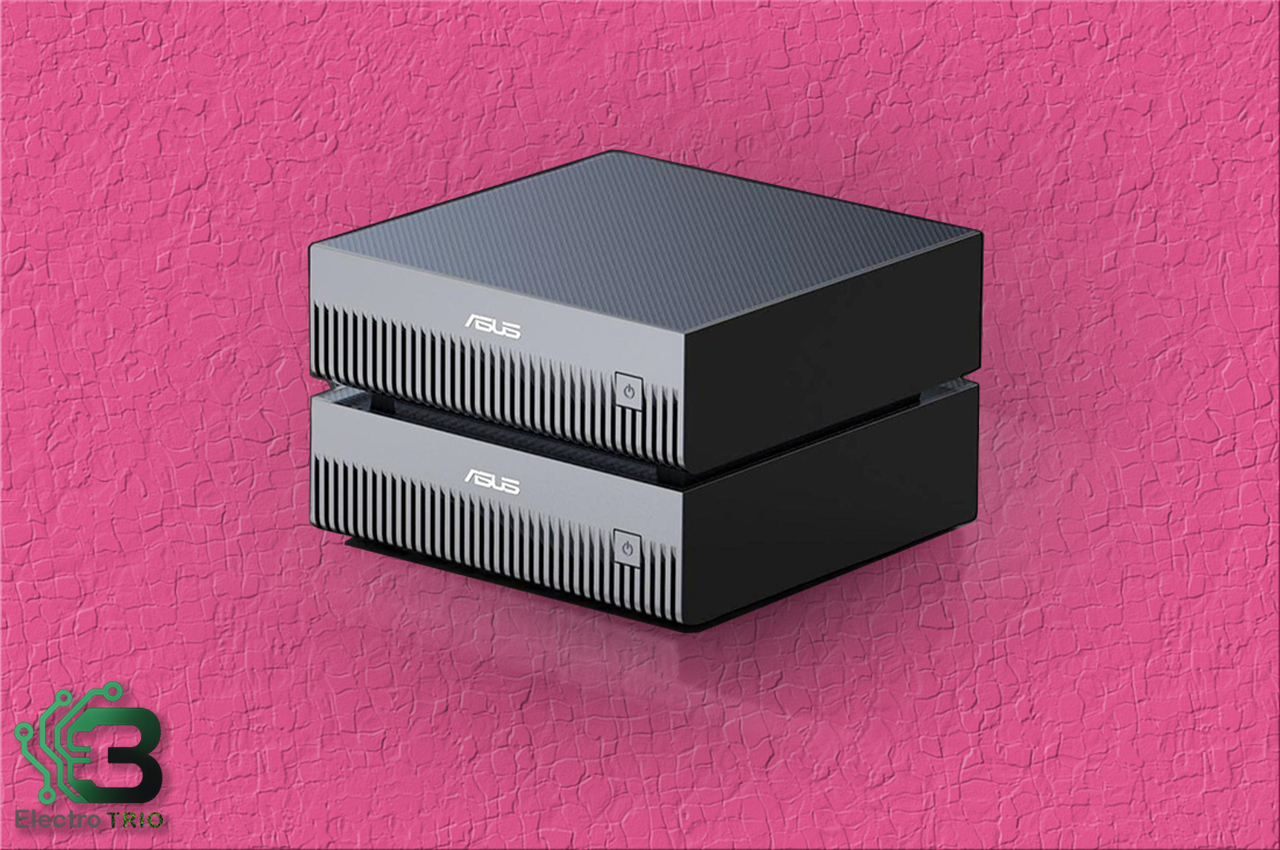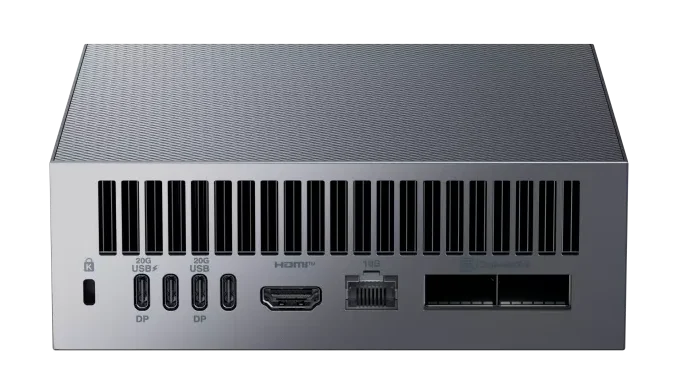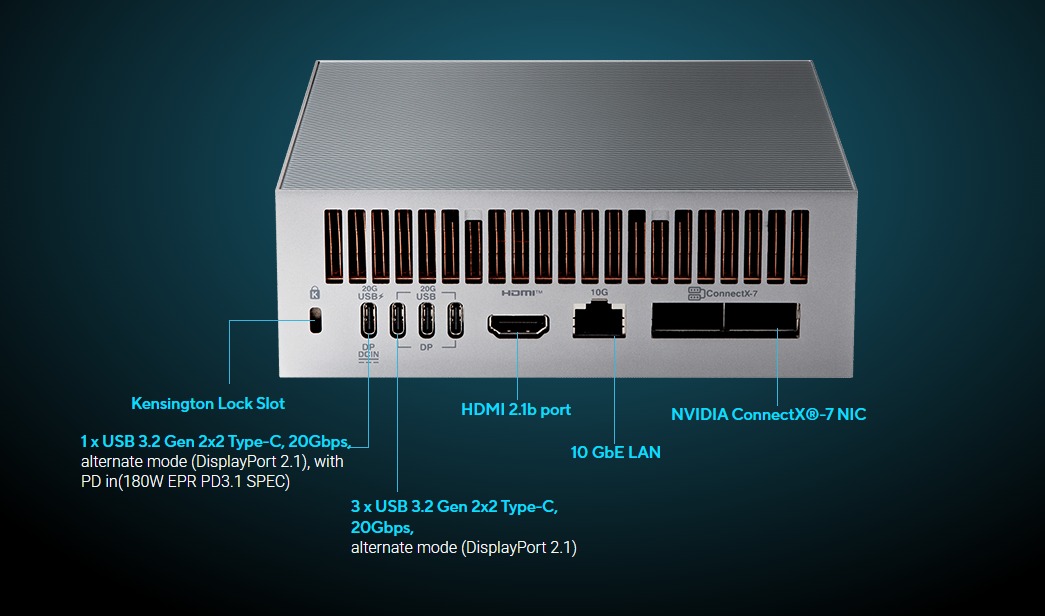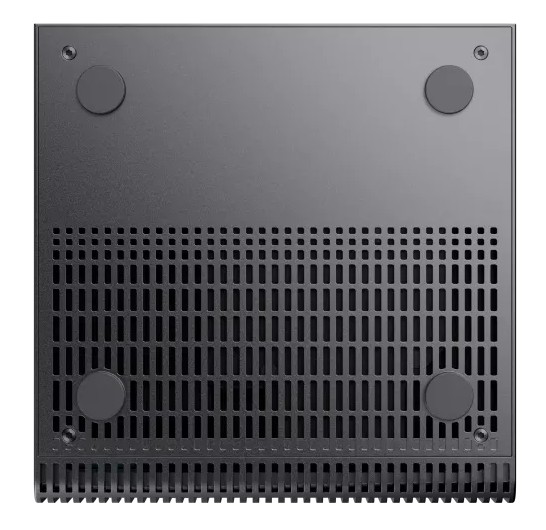The ASUS Ascent GX10 AI supercomputer is a small yet powerful AI system that is a new standard in desktop AI solutions and makes it available to researchers, developers, and data scientists. Although small, it can still provide petaflop performance, meaning that it can be used to execute the demanding AI workloads without having to fill a whole rack with servers.
At its core, the GX10 integrates the NVIDIA GB10 Grace Blackwell Superchip, combining unified CPU-GPU memory, high-speed interconnects, and an optimized software stack. This design brings advanced AI performance directly to the desktop, reducing reliance on cloud resources while enabling local model fine-tuning, inference, and experimentation.
We haven’t covered a system like this before, but we have featured several compact AI and mini PCs such as Compulab’s EdgeAI-ORN, reComputer J4012, and OnLogic Karbon 521. You can check those out for comparison.
ASUS Ascent GX10 AI supercomputer specifications:
The ASUS Ascent GX10 AI supercomputer runs on the NVIDIA GB10 Grace Blackwell Superchip, which integrates a 20-core Arm CPU and a Blackwell GPU with 5th-generation Tensor Cores supporting FP4 precision. The system delivers up to 1 petaflop (1000 TOPS) of AI performance with 128 GB unified LPDDR5x memory, making it capable of handling models up to ~200 billion parameters and enabling local fine-tuning of models up to ~70 billion parameters.
ASUS Ascent GX10 compact AI supercomputer ports
The GX10 is capable of storing M.2 NVMe SSDs (1 TB, 2 TB or 4 TB) with either PCIe 4.0 or PCIe 5.0 interfaces, depending on configuration. It is connected to 10G Ethernet, Wi-Fi 7, Bluetooth 5, three USB 3.2 Gen2x2 Type-C ports with DisplayPort 2.1 alt mode, HDMI 2.1 port, and NVIDIA ConnectX-7 SmartNIC that is meant to facilitate interconnection between two systems. The system uses NVLink-C2C to bridge the bandwidth of the PCIe 5.0 by 5x in order to reach unified memory at a higher speed.
Despite its high-end performance, the GX10 maintains a compact 150 x 150 x 51 mm form factor and weighs just 1.48 kg. Power comes through USB-C PD 3.1 EPR, with up to 240 W from an external adapter and ~180 W input to the device. Front I/O includes a power button, while the back panel provides Kensington lock support along with its rich port selection.
Software:
The ASUS Ascent GX10 comes preloaded with the NVIDIA AI software stack and DGX OS, an Ubuntu-based platform designed for AI development. It includes popular frameworks such as PyTorch, TensorFlow, and JAX, along with optimization tools like NVIDIA TensorRT, Blueprints, and NIMs, giving developers a complete environment for building and deploying AI models.
The software stack handles each step of the workflow including rapid prototyping, fine-tuning, inference and deployment as well as allowing the use of open-source models directly. In projects with even higher capacity demands, users may connect two GX10 with the NVIDIA ConnectX-7 SmartNIC to perform a performance scale up to larger AI models. The system also complies with the global standards, as it is carrying certifications e.g. BSMI, CB, CE, FCC, UL, CCC, C-Tick, WiFi, RF and VCCI.
The official ASUS page does not list pricing details, but the ASUS Ascent GX10 is already available for preorder through several distributors. In the US, it is listed on ViperaTech for about $4,100, while in Australia it is offered by Digicor for around $6,363. For specifications and availability updates, you can check the official ASUS product page.




